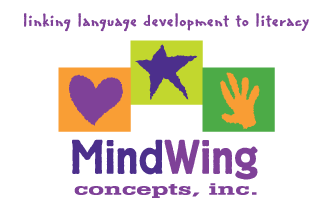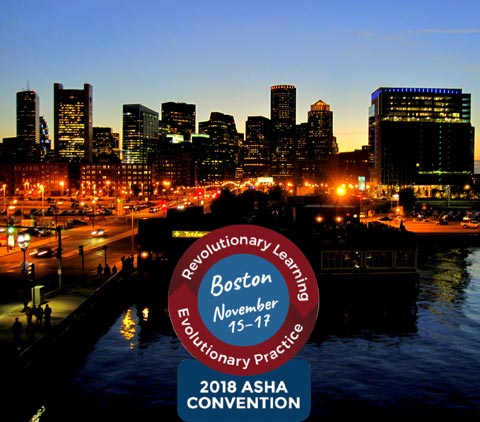Secure Checkout. FREE SHIPPING for Continental U.S. Orders over $60.
Menu
-
- Home
-
About Us
-
The Approach
-
Linking Language & Literacy
-
MindWing Learning
-
Learning Resources
-
SHOP
-
Blog
-
- About MindWing
- Our People
- Contact Us
- Your Account
- Login
-
United States (USD $)

Secure Checkout. FREE SHIPPING for Continental U.S. Orders over $60.
MindWing Concepts Blog

Teaching Aesop’s Fables and The Often Elusive “Lesson Learned” Using Story Grammar Marker
January 11, 2019
 Colleagues often ask how I would use the Story Grammar Marker® or Braidy the StoryBraid® with Aesop’s Fables. Fables are stories that teach a lesson and, because of that feature, are often part of academic curricula from grade 1 on. I decided to write a little bit about fables today because the lessons learned often relate to New Year’s Resolutions we all make! Most often fables involve animals as the characters but relate to human nature. Perspective taking, Theory of Mind and Lessons Learned are required to understand a fable. All of these are difficult for many students. The following shows the use of our Story Grammar Marker® icons to map “The Ants & The Grasshopper” fable for purposes of comprehension and expression. These icons—and our entire SGM® approach—will be 28 years old in 2019!...
Colleagues often ask how I would use the Story Grammar Marker® or Braidy the StoryBraid® with Aesop’s Fables. Fables are stories that teach a lesson and, because of that feature, are often part of academic curricula from grade 1 on. I decided to write a little bit about fables today because the lessons learned often relate to New Year’s Resolutions we all make! Most often fables involve animals as the characters but relate to human nature. Perspective taking, Theory of Mind and Lessons Learned are required to understand a fable. All of these are difficult for many students. The following shows the use of our Story Grammar Marker® icons to map “The Ants & The Grasshopper” fable for purposes of comprehension and expression. These icons—and our entire SGM® approach—will be 28 years old in 2019!...

New Year Lesson: Recalling 2018 & Planning 2019 with Story Grammar Marker!
December 07, 2018
 Activities that allow us to reflect on the past are helpful in establishing habits of reviewing what we have done well, what we enjoyed, and what we would like to change. We have included some suggested activities that use the SGM icons to add to your toolbox. Ask students to recall one day from 2018 that they especially remember. Give the students an SGM Writing form or a Student Marker to plan their story. Give students time to fill in notes on the sheet and/or practice with the student marker and then, students could orally share their stories with one another...
Activities that allow us to reflect on the past are helpful in establishing habits of reviewing what we have done well, what we enjoyed, and what we would like to change. We have included some suggested activities that use the SGM icons to add to your toolbox. Ask students to recall one day from 2018 that they especially remember. Give the students an SGM Writing form or a Student Marker to plan their story. Give students time to fill in notes on the sheet and/or practice with the student marker and then, students could orally share their stories with one another...

Tech Tuesday: ASHA Beantown Wrap-Up, Part 1
November 20, 2018
 This past week featured the American Speech-Language Hearing Association’s annual national convention in our home state (and my home city of Boston)! MindWing presented and exhibited at the convention and I was proud to be part of two presentations that incorporated MindWing’s tools with context-setting resources including both technology and picture books. I was thrilled to present another edition of an oral seminar describing the helpful pairing of picture books and apps for contextualized language intervention. As this year’s ASHA theme focused on evolution and innovation within the field of speech-language pathology, this presentation centered around pairings that aligned with social studies and science topics (Boston also is a “Hub” of both disciplines). Some of the background within this presentation centered on why SLPs and literacy interventionists might seek to incorporate social studies and science topics in our work...
This past week featured the American Speech-Language Hearing Association’s annual national convention in our home state (and my home city of Boston)! MindWing presented and exhibited at the convention and I was proud to be part of two presentations that incorporated MindWing’s tools with context-setting resources including both technology and picture books. I was thrilled to present another edition of an oral seminar describing the helpful pairing of picture books and apps for contextualized language intervention. As this year’s ASHA theme focused on evolution and innovation within the field of speech-language pathology, this presentation centered around pairings that aligned with social studies and science topics (Boston also is a “Hub” of both disciplines). Some of the background within this presentation centered on why SLPs and literacy interventionists might seek to incorporate social studies and science topics in our work...

Tech Tuesday: Google’s Geo-Tools Show More than Setting!
October 30, 2018
 Following up on last month’s Tech Tuesday post describing some narrative and expository teaching tools within Google’s G-Suite, this month we’ll look at some Google resources to visualize setting (and more)! Google Earth has long been a great tool for language development, as it is a searchable, interactive globe allowing you to zoom into an aerial (3D) image of any location, as well as offering Street View interactive imagery and text descriptions. Google Earth previously existed as a complicated downloadable application but now is available as a web version in the Chrome browser, as well as a simplified free iPad app...
Following up on last month’s Tech Tuesday post describing some narrative and expository teaching tools within Google’s G-Suite, this month we’ll look at some Google resources to visualize setting (and more)! Google Earth has long been a great tool for language development, as it is a searchable, interactive globe allowing you to zoom into an aerial (3D) image of any location, as well as offering Street View interactive imagery and text descriptions. Google Earth previously existed as a complicated downloadable application but now is available as a web version in the Chrome browser, as well as a simplified free iPad app...

Room on the Broom! Halloween Book, Netflix Original & DIY Re-telling Wheel!
October 24, 2018 1 Comment
 If you are looking for a lively read for Halloween, check out Room on the Broom, written by Julia Donaldson and illustrated by Alex Scheffler. This book is presented in delightful rhyme, making it an ideal book for the younger set (Pre-K—Gr 2). It is a perfect selection to map out two Complete Episodes emphasizing a new Kick-Off. Below is the story mapped out from the witch’s perspective. Use Braidy the StoryBraid® or the Story Grammar Marker® to retell it to the students. At the end of this blog, we have also included a downloadable “Retelling Wheel” to be used by students to retell the story to one another...
If you are looking for a lively read for Halloween, check out Room on the Broom, written by Julia Donaldson and illustrated by Alex Scheffler. This book is presented in delightful rhyme, making it an ideal book for the younger set (Pre-K—Gr 2). It is a perfect selection to map out two Complete Episodes emphasizing a new Kick-Off. Below is the story mapped out from the witch’s perspective. Use Braidy the StoryBraid® or the Story Grammar Marker® to retell it to the students. At the end of this blog, we have also included a downloadable “Retelling Wheel” to be used by students to retell the story to one another...
Tech Tuesday: Back to School Part 3—Considering Narrative Language Applications of Google Tools
September 25, 2018
![]() Let’s consider some uses of one of the most commonly applied EdTech Tools: Google’s Apps or “G Suite.” G Suite has become a go-to within schools for a number of reasons, including its price (free), versatility and ease of use of productivity tools such as Docs and Slides, word processing and presentation creators, respectively. Additionally, G Suite is easily used on inexpensive Chromebook computers, which allow schools to put technology in a wide range of hands across the day. Chromebooks are easy to manage and essentially only run a Chrome web browser, making them a good match for use with the web-based G Suite. SLPs and literacy interventionists may see G Suite as too basic to consider for storytelling and narrative language opportunities. However, the opportunities to use images, drawings, and other visual supports are varied, easy to use, and worth considering—particularly when seeking to implement MindWing’s methodologies such as Story Grammar Marker® and ThemeMaker® within classroom settings, G Suite features will make it easy for students to apply what they are learning about narrative and expository language!...
Let’s consider some uses of one of the most commonly applied EdTech Tools: Google’s Apps or “G Suite.” G Suite has become a go-to within schools for a number of reasons, including its price (free), versatility and ease of use of productivity tools such as Docs and Slides, word processing and presentation creators, respectively. Additionally, G Suite is easily used on inexpensive Chromebook computers, which allow schools to put technology in a wide range of hands across the day. Chromebooks are easy to manage and essentially only run a Chrome web browser, making them a good match for use with the web-based G Suite. SLPs and literacy interventionists may see G Suite as too basic to consider for storytelling and narrative language opportunities. However, the opportunities to use images, drawings, and other visual supports are varied, easy to use, and worth considering—particularly when seeking to implement MindWing’s methodologies such as Story Grammar Marker® and ThemeMaker® within classroom settings, G Suite features will make it easy for students to apply what they are learning about narrative and expository language!...
